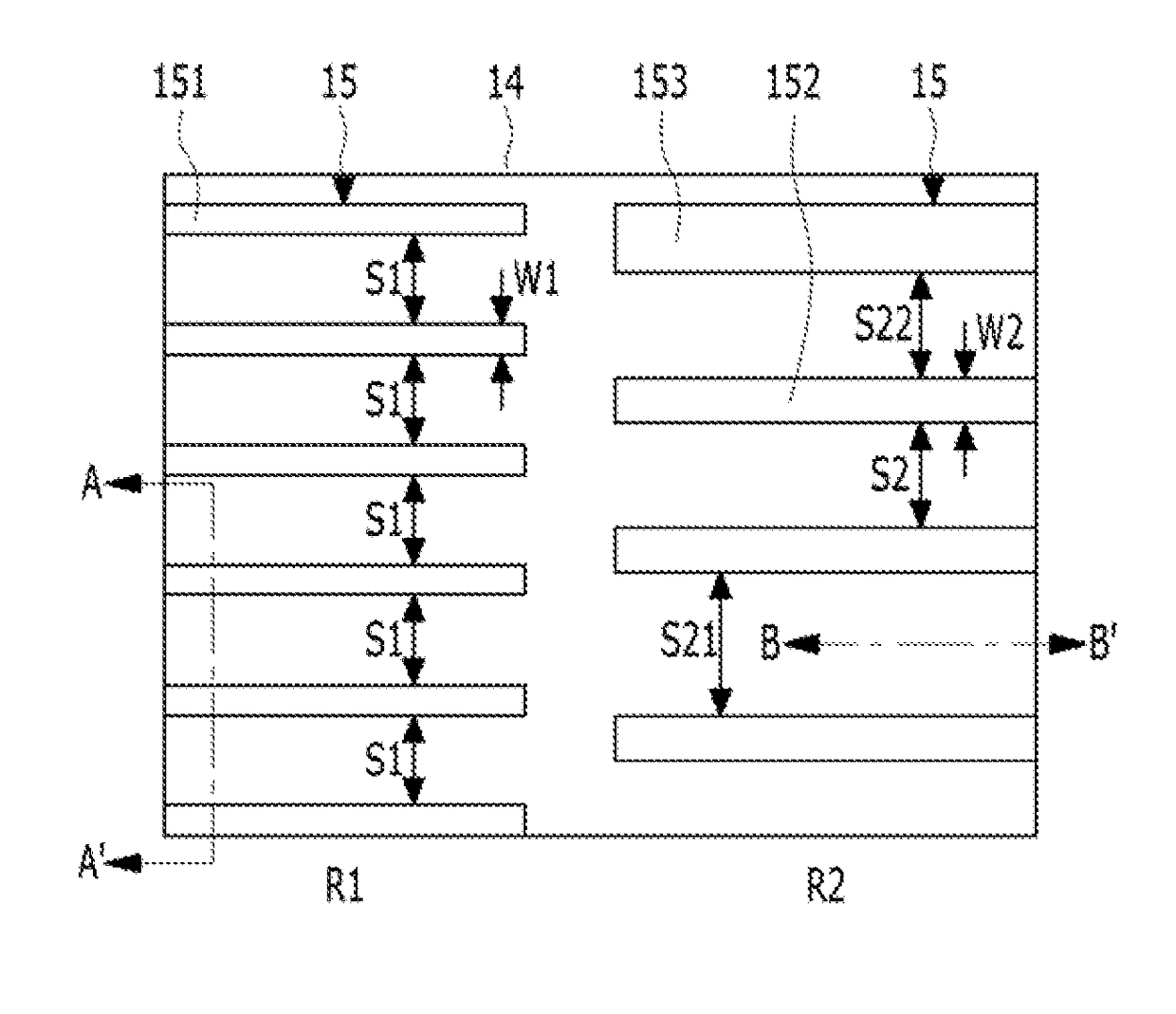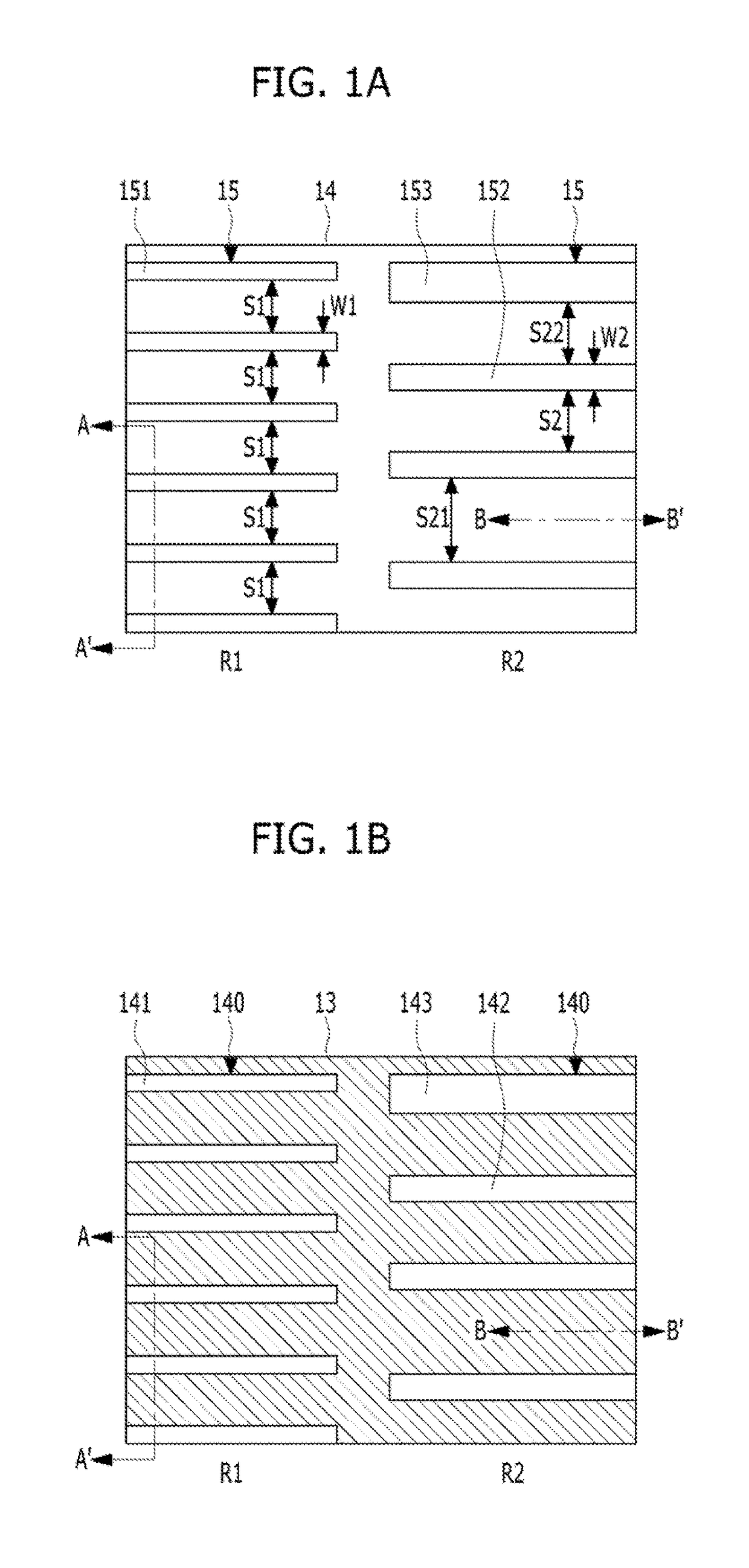Method for forming patterns of semiconductor device
a semiconductor device and pattern technology, applied in the field of pattern forming, can solve the problems of difficulty in forming patterns with fine pitches, and achieve the effects of improving patterning and process margins, improving critical dimension uniformity (cdu), and reducing line critical dimension (line cd)
- Summary
- Abstract
- Description
- Claims
- Application Information
AI Technical Summary
Benefits of technology
Problems solved by technology
Method used
Image
Examples
first embodiment
[0022]FIGS. 1A to 1O are plan views illustrating a method for forming patterns of a semiconductor device in accordance with a FIGS. 2A to 2O are cross-sectional views taken along the lines A-A′ and B-B′ of FIGS. 1A to 1O.
[0023]As shown in FIGS. 1A and 2A, an etch target layer 11 may be prepared. The etch target layer 11 may include suitable materials for semiconductor processing. The etch target layer 11 may include a semiconductor substrate. For example, the etch target layer 11 may include a silicon substrate, a silicon germanium (SiGe) substrate or an Silicon On Insulator (SOI) substrate. Also, the etch target layer 11 may include a dielectric material or a conductive material. For example, the etch target layer 11 may include a silicon oxide, a silicon nitride, a polysilicon, a metallic material, or a combination thereof. The etch target layer 11 may include a dielectric material which is formed on a semiconductor substrate.
[0024]The etch target layer 11 may include a first reg...
second embodiment
[0081]FIGS. 4A to 4P are plan views illustrating a method for forming patterns of a semiconductor device in accordance with a FIGS. 5A to 5P are cross-sectional views taken along the lines A-A′, B-B′ and C-C′ of FIGS. 4A to 4P.
[0082]As shown in FIGS. 4A and 5A, an etch target layer 31 may be prepared. The etch target layer 31 may include suitable materials for semiconductor processing. The etch target layer 31 may include a semiconductor substrate. For example, the semiconductor substrate may include a silicon substrate, a silicon germanium (SiGe) substrate or an Silicon On Insulator (SOI) substrate. Also, the etch target layer 31 may include a dielectric material or a conductive material. For example, the etch target layer 31 may include a silicon oxide, a silicon nitride, a polysilicon, a metallic material, or a combination thereof.
[0083]The etch target layer 31 may include a first region R1, a second region R2 and a third region R3. The first region R1 may be a region formed wit...
PUM
 Login to View More
Login to View More Abstract
Description
Claims
Application Information
 Login to View More
Login to View More - R&D
- Intellectual Property
- Life Sciences
- Materials
- Tech Scout
- Unparalleled Data Quality
- Higher Quality Content
- 60% Fewer Hallucinations
Browse by: Latest US Patents, China's latest patents, Technical Efficacy Thesaurus, Application Domain, Technology Topic, Popular Technical Reports.
© 2025 PatSnap. All rights reserved.Legal|Privacy policy|Modern Slavery Act Transparency Statement|Sitemap|About US| Contact US: help@patsnap.com



